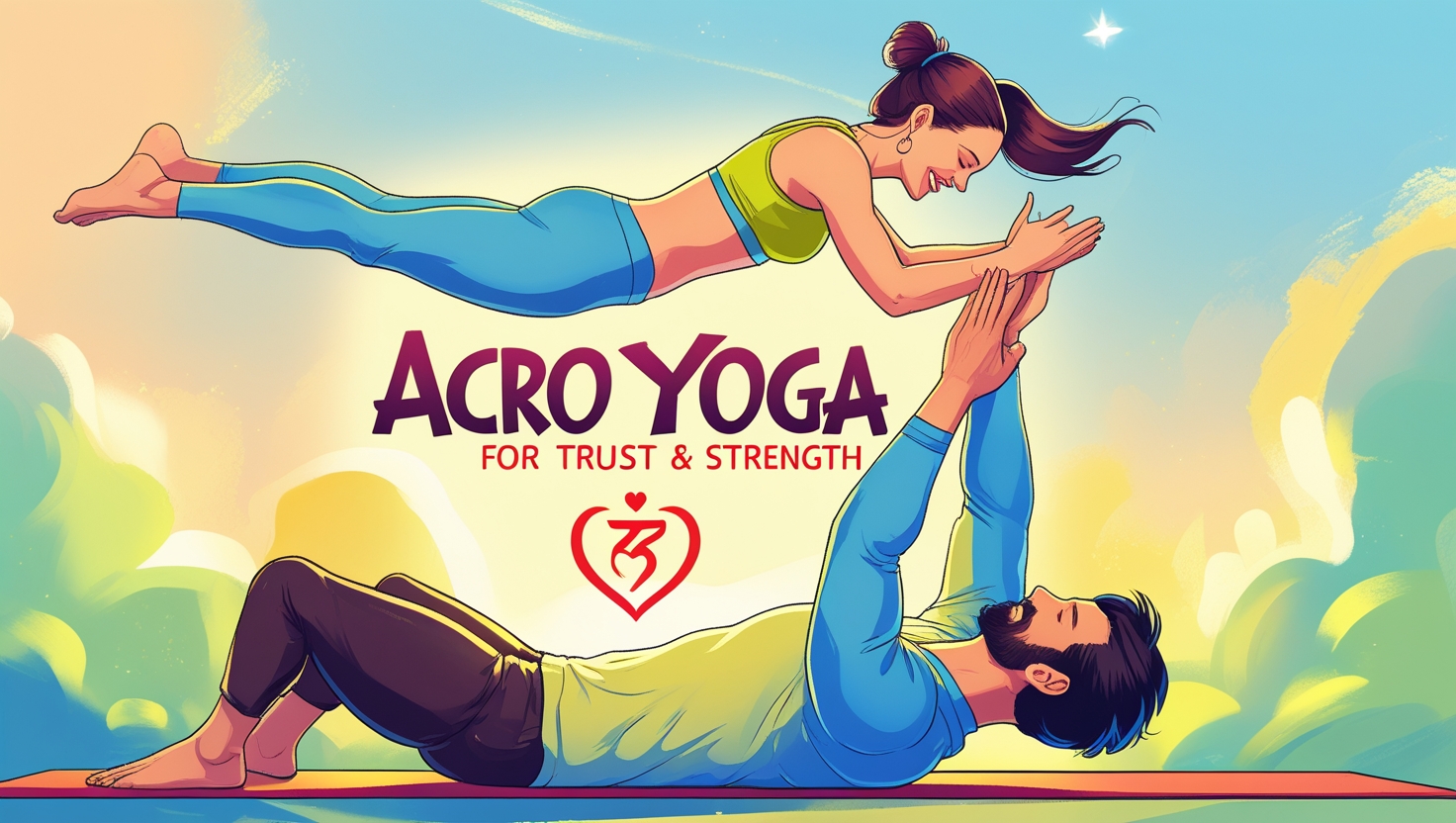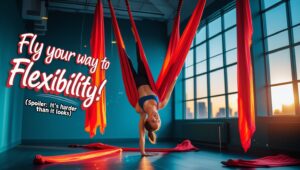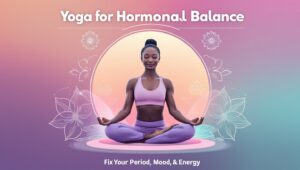Imagine a workout where balance, strength, and trust are not just personal goals but shared achievements between partners. AcroYoga brings together the best of acrobatics and yoga, inviting practitioners to engage in partner-based poses that build not only physical strength but also deep trust and connection. In this comprehensive guide, we’ll explore the fundamentals of AcroYoga, its origins, the wide-ranging benefits it offers, and practical tips for beginners and seasoned practitioners alike. Whether you’re looking to spice up your fitness routine, challenge your body in new ways, or simply enjoy a playful partnership on the mat, AcroYoga might be just the transformative practice you need.
What Is AcroYoga?
AcroYoga is a dynamic blend of yoga, acrobatics, and Thai massage that emphasizes partner-based work. In an AcroYoga class, participants take turns being the base, flyer, or spotter. This three-part role system not only creates a full-body workout but also fosters communication, balance, and trust between partners.
The Components of AcroYoga
- Base: The partner who remains on the ground, providing a stable foundation and support. The base must have good core strength and an understanding of body mechanics.
- Flyer: The partner who is lifted into various poses, relying on the base’s support while challenging their own balance and strength.
- Spotter: An optional role that adds an extra layer of safety by providing support and guidance during transitions and inversions.
Together, these roles form the essence of AcroYoga—a practice that challenges physical limits while nurturing trust and cooperation between individuals.
The Origins of AcroYoga
AcroYoga emerged from a fusion of different traditions, drawing on the physical discipline of yoga, the playful acrobatics of circus arts, and the healing touch of Thai massage.
A Fusion of Disciplines
- Yoga: The ancient practice of yoga contributes mindfulness, breath work, and a focus on alignment and flexibility.
- Acrobatics: Acrobatics infuses the practice with dynamic movements, lifts, and inversions that build strength and balance.
- Thai Massage: Elements of Thai massage are often integrated into the cool-down or partner adjustments, emphasizing body awareness and the flow of energy between individuals.
How It Evolved
AcroYoga’s modern form began taking shape in the early 2000s as yoga enthusiasts and acrobats experimented with partner poses to create a more interactive and holistic practice. Today, AcroYoga is taught worldwide, celebrated for its ability to bring people together in both playful and transformative ways. Its community is built on mutual respect, open communication, and the willingness to trust others—values that extend far beyond the mat.
The Transformative Benefits of AcroYoga
AcroYoga is much more than a trendy fitness fad. It offers a host of benefits for both the body and mind, making it an excellent practice for those looking to challenge themselves in new, cooperative ways.
Physical Benefits
- Enhanced Strength and Stability:
The roles in AcroYoga require significant strength—especially in the core, arms, and legs. The base develops a sturdy foundation while the flyer challenges their balance and coordination. This combination helps build a strong, balanced body. - Improved Flexibility:
Like traditional yoga, AcroYoga incorporates deep stretching that enhances flexibility. The dynamic movements and transitions between poses can lead to a greater range of motion over time. - Better Balance and Coordination:
The practice demands precise timing and awareness of one’s body in space. As you progress, you’ll notice improvements in balance, coordination, and proprioception (your sense of body position). - Cardiovascular and Core Conditioning:
Many AcroYoga sequences are fast-paced and physically demanding, offering a cardio boost while simultaneously engaging the core. This makes it an effective workout for building endurance and overall fitness.
Mental and Emotional Benefits
- Building Trust and Communication:
AcroYoga is built on partnership. Whether you’re the base, flyer, or spotter, you must communicate clearly and trust your partner implicitly. This shared vulnerability helps strengthen relationships and fosters a sense of community. - Boosting Confidence:
Successfully executing challenging poses—and even recovering from a misstep—can be a major confidence booster. The supportive environment encourages you to take risks and celebrate your progress. - Stress Relief and Emotional Release:
Engaging in AcroYoga shifts your focus away from daily stressors, immersing you in the present moment. The physical activity and mutual support work together to release built-up tension and create a feeling of empowerment. - Fostering Playfulness:
The inherent playfulness of AcroYoga invites laughter, spontaneity, and joy. This light-hearted aspect can be a refreshing counterbalance to the pressures of everyday life.
How AcroYoga Works: A Closer Look at the Practice
A typical AcroYoga session is structured to include a warm-up, a series of partner poses, and a cool-down period. Here’s a closer look at what you can expect:
1. Warm-Up and Preparation
Before diving into partner poses, classes usually begin with a thorough warm-up. This may include:
- Dynamic Stretching: Gentle movements to loosen muscles and prepare the body for more strenuous activity.
- Breath Work: Mindful breathing exercises to help you center yourself and focus on your partner.
- Communication Drills: Simple exercises designed to break the ice and establish clear communication between partners.
2. Exploring Partner Poses
The heart of AcroYoga lies in its partner-based poses. Common sequences include:
- Front Plank and Bird: The base supports the flyer in a plank position as the flyer lifts their legs into a bird pose.
- Flying Warrior: A pose that combines elements of balance, strength, and flexibility as the flyer stretches into a warrior pose with the base’s support.
- Star Pose: Both partners work together to create a shape reminiscent of a star, emphasizing alignment and mutual balance.
- Inversions: For those who feel ready, inversions offer the thrilling experience of being upside down, supported entirely by your partner’s trust and strength.
3. The Role of the Spotter
For beginners, the role of a spotter is often introduced to enhance safety. A spotter stands by to provide immediate assistance if a pose becomes unstable. Over time, as trust builds and confidence grows, many practitioners find that they rely less on the spotter and more on the natural rhythm between base and flyer.
4. Cool-Down and Reflection
After the active portion of the session, classes typically wind down with a cool-down that may include:
- Gentle Stretching: To release any residual tension from the muscles.
- Partner Thai Massage: Light massage techniques that encourage relaxation and help partners reconnect on a deeper level.
- Meditation or Guided Relaxation: A quiet time for reflection, allowing the benefits of the practice to settle in both body and mind.
Real-Life Stories: Trust, Laughter, and Transformation
AcroYoga has a way of transforming relationships—not just with others, but with yourself. Here are a few inspiring stories from practitioners:
Jamie and Alex: A Journey of Partnership
Jamie and Alex met through an AcroYoga class, initially drawn together by curiosity. “We were both a bit nervous at first,” Jamie recalls, “but as we navigated the poses together, we found ourselves laughing through the challenges and building a deep sense of trust.” Today, their practice has not only strengthened their bodies but also enriched their friendship, proving that AcroYoga can be a powerful connector.
Maya’s Solo Leap into Partnership
For Maya, AcroYoga was an unexpected journey into self-discovery. “I was always a solo practitioner, but AcroYoga forced me to be vulnerable and depend on someone else,” she shares. Over time, Maya discovered that the practice helped her break through personal barriers and boosted her confidence both on and off the mat.
Community Bonds Through AcroYoga
Many studios have found that AcroYoga fosters a unique sense of community. Classes often end with social gatherings where practitioners share their experiences, celebrate their progress, and plan future sessions together. This communal aspect has been described as both healing and transformative, turning a fitness class into a supportive network of friends and mentors.
Tips for Beginners: How to Embrace AcroYoga
If you’re new to AcroYoga, stepping into a class for the first time might seem daunting. Here are some practical tips to ensure you have a safe and enjoyable experience:
- Choose the Right Class:
Look for beginner-friendly sessions that emphasize safety, clear instruction, and gradual progression. Many studios offer introductory classes specifically designed for newcomers. - Start with a Partner You Trust:
If possible, begin with someone you’re comfortable with. If you don’t have a partner, many classes are structured so you can pair up with a fellow beginner. - Communicate Openly:
Effective communication is key in AcroYoga. Discuss your comfort levels, any physical limitations, and your goals with your partner before beginning each pose. - Listen to Your Body:
If a pose doesn’t feel right or if you experience discomfort, don’t hesitate to ask for modifications. Remember, it’s more important to build trust and safety than to push through pain. - Embrace the Learning Process:
Mistakes and wobbles are all part of the journey. Laugh off the missteps and celebrate the small victories. Each attempt builds your strength and confidence. - Utilize Spotters:
Especially in the beginning, don’t shy away from using a spotter. Their support can make challenging poses more accessible and help you progress more safely. - Practice Patience:
Building the necessary strength, balance, and trust takes time. Regular practice and a willingness to learn from every session will lead to gradual improvements. - Wear Comfortable, Form-Fitting Clothing:
Form-fitting attire helps both you and your partner see alignment and movement clearly. It also minimizes the risk of fabric interfering with your partner poses.
Common Challenges and How to Overcome Them
While AcroYoga offers tremendous rewards, it also presents unique challenges. Here are a few common hurdles along with tips for overcoming them:
Balancing Act
Challenge: Maintaining balance—especially as a flyer—can be daunting.
Tip: Focus on engaging your core and keeping your gaze fixed on a steady point. With practice, you’ll find your balance improving over time.
Trust Issues
Challenge: Allowing yourself to be lifted or to support someone else requires deep trust.
Tip: Start with simple poses and gradually progress to more challenging ones as trust builds. Open communication with your partner is crucial.
Physical Limitations
Challenge: Not everyone has the same level of strength or flexibility.
Tip: Modify poses as needed and celebrate incremental progress. Remember, AcroYoga is a journey tailored to each individual’s abilities.
Coordination and Timing
Challenge: Synchronizing movements with your partner can feel like a complex dance.
Tip: Practice slowly at first, then gradually build up speed. Repetition and clear verbal cues will help your partnership flow more naturally.
Frequently Asked Questions (FAQs)
Q1: What is AcroYoga exactly?
A: AcroYoga is a partner-based practice that combines elements of yoga, acrobatics, and Thai massage. It involves a base, flyer, and optionally a spotter, working together to perform poses that build strength, flexibility, balance, and trust.
Q2: Do I need a yoga background to start AcroYoga?
A: No previous yoga experience is required. AcroYoga classes are designed to be accessible to beginners, with modifications available for those who are new to yoga or acrobatics.
Q3: How do I choose a partner for AcroYoga?
A: It’s best to start with someone you trust and feel comfortable with. Many classes also encourage participants to pair with fellow beginners, creating a supportive environment for everyone.
Q4: Is AcroYoga safe?
A: Yes, when practiced in a class with experienced instructors and proper safety protocols, AcroYoga is a safe practice. Using spotters and clear communication helps prevent injuries.
Q5: What are the physical benefits of AcroYoga?
A: AcroYoga improves core strength, balance, flexibility, and cardiovascular endurance. It also engages multiple muscle groups simultaneously, leading to a full-body workout.
Q6: Can AcroYoga help build trust and improve relationships?
A: Absolutely. The practice requires communication, vulnerability, and support between partners, which can strengthen bonds and build trust both on and off the mat.
Q7: How often should I practice AcroYoga to see benefits?
A: Regular practice—ideally a couple of times a week—can lead to noticeable improvements in physical strength, balance, and trust-building skills over time.
Q8: What should I wear to an AcroYoga class?
A: Wear comfortable, form-fitting clothing that allows for a full range of motion. This helps you and your partner maintain clear alignment and minimizes interference during poses.
Q9: Is there a learning curve with AcroYoga?
A: Yes, as with any partner-based or acrobatic practice, there is a learning curve. Patience, consistent practice, and a willingness to learn from mistakes are key to progressing safely.
Q10: Can I practice AcroYoga alone?
A: While the core of AcroYoga is partner work, many studios offer foundation or solo conditioning exercises that support your practice. However, to experience the full benefits, working with a partner is essential.
Conclusion
AcroYoga is a unique and transformative practice that goes far beyond a conventional workout. It challenges you physically, mentally, and emotionally by encouraging you to trust another person with your safety and well-being. The collaborative nature of the practice builds not only strength and flexibility but also communication skills, empathy, and a sense of community.
Whether you’re looking to add a playful twist to your fitness routine, deepen your yoga practice, or forge meaningful connections with others, AcroYoga offers a pathway to both physical and personal transformation. The journey may begin with simple partner poses, but with each session, you build confidence, learn the art of balance, and open up to the possibility of deeper trust and connection.
So, if you’re ready to explore the exciting world of partner yoga, gather a friend or join a class, and experience the powerful synergy of AcroYoga for yourself. Embrace the challenges, celebrate the successes, and let every lift, every balance, and every shared laugh pave the way to a stronger, more connected you.
May your journey in AcroYoga bring you strength, joy, and an ever-deepening trust—in yourself and in those around you.















Add comment